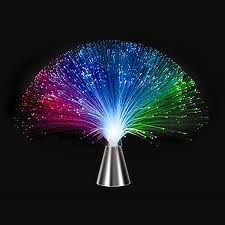22nd Century Earth
It’s the year 2125, an agent from Special Services has come back to the U.S. after prolonged undercover work in the Middle East. She has been diagnosed with post-traumatic stress disorder (PTSD). The daily anxiety and nightmares from the condition have led to complete withdrawal from society otherwise violence ensues. She is only 28 years old. Chemical and behavior therapy have been tried to no avail. Optogenics has been suggested and approved by the military robotic medical panel. The patient gives her consent and receives a copy of the brain site(s) that will be altered with light therapy.
In the case of this Special Services soldier, she repeatedly experienced life-threatening events while on duty over a period of years. Evaluating her brain scans indicates problems in both prefrontal cortex and the amygdala. Doctors will inject her with nanotherapy (manipulation of things very small-down to atom level) containing bioluminescence gene designed go to the brain, taking residence in both problem areas.
Pulsed Light In Brain
The bioluminescence gene makes only targeted areas sensitive to light. A device is used outside the body to pulse this light when needed to treat PTSD. The positive effects occur at the instant of light therapy. It only effects the area where the gene has been seeded. This patient is treated successfully and goes back to a normal lifestyle.
It all started in the 20th century where curious scientists noticed that single-celled bacteria and other small organisms respond to light. These little guys use light as a cue to move towards or change light into energy.
In the year 2002, research groups isolated organisms that responded to different wavelengths (colors) of light. Next, they engineered a virus to carry a gene to the neuron (nerve) of a brain cell that would make it sensitive to light. Research has increased in complexity over the years. Initially, experimentation with just layers of cells to mice and finally now to monkeys. Activation of any part of the brain is possible by altering the virus bringing the light gene with a specific wavelength (color) of light. This is made possible by using a fiber-optic cable implanted in the brain. You remember those fiber optic lights everyone used to have in the home.
Memories Of The Past
The Progression Of Optogenics Therapy in 2013:
In mice, science has been able to pulse light in the brain’s hippocampus involved in the memory of fright. Fright memory is deactivated when illumination is shut off. So they forget being scared and the traumatic event is erased. Pulse the light back on and mouse freezes in place, fright memory is back. Specific area of treatment is where neurons are causing the fear, anxiety and the agoraphobia of the condition.
Therapy Worked A Little Too Well
For depression in mice, when light is turned on, they become more socially alive and eager for food. When the light is switched off, they become lethargic, not wanting to feed and having complete lack of interest in their surroundings. Their target is the midbrain neurons that produce dopamine. Currently, in humans, when using medications for treatment of depression, we flood the entire area with either serotonin or norepinephrine or both. Up to 50% of patients don’t respond to these medications.
In epileptic mice, when the light goes on, the seizures stop. Light goes off, seizures will resume. Researchers have to find and target overactive regions of the brain causing excess electrical stimulation. In mice, they have targeted the brain’s cortex and thalamus.
For addictive behavior, when they illuminate targeted area addiction is lost. This reverses when the light is turned off. You need to target the reward (pleasure) center of the brain’s cortex to stop the habit for abuse.
This therapy may also benefit individuals with Alzheimer’s, Parkinson’s Disease, other dementia, autism, schizophrenia and other psychiatric disorders.
Excellent Video About Optogenetics
Categories: Health




The future is bright… blue
LikeLike
Oh yes! That it be.
LikeLike